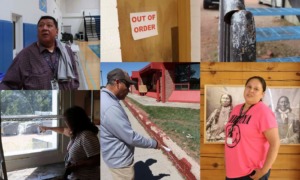 As a member of the Maine Afterschool Network, I was fortunate to attend the recent National Afterschool Association conference in Washington, D.C., and visit with our state’s senators and representatives about the importance of keeping the funds for 21st Century programs intact. In an effort to fix “No Child Left Behind,” a bill was submitted that would allocate funding to the states and local school districts to decide how to improve student achievement in their communities. This would include funds traditionally allocated to 21st Century Community Learning Centers. Should this funding go directly to the school districts, it opens the door for such funding to be used for purposes other than out-of-school time (OST) programming.
As a member of the Maine Afterschool Network, I was fortunate to attend the recent National Afterschool Association conference in Washington, D.C., and visit with our state’s senators and representatives about the importance of keeping the funds for 21st Century programs intact. In an effort to fix “No Child Left Behind,” a bill was submitted that would allocate funding to the states and local school districts to decide how to improve student achievement in their communities. This would include funds traditionally allocated to 21st Century Community Learning Centers. Should this funding go directly to the school districts, it opens the door for such funding to be used for purposes other than out-of-school time (OST) programming.
In that visit to Capitol Hill as part of the “Afterschool for All Challenge,” one of our Maine Afterschool Network team members was a director from a program whose six sites provide high-quality OST programming that engages youth in learning and healthy development activities, while also helping youth build skills for their future. He described how each week, his program (with the help of a local food bank) supplies 200 children and their families with a backpack of food to take home for the weekend.
He mentioned his concern for children and youth who were not able to get their daily nutrition needs met due to the large number of snow days this year, when the schools and after-school programs were closed. During one of the coldest winters in Maine in years, with record snowfalls, young people not only missed out on the safety net that their school and after-school programs provide, but they also missed the opportunity to have a warm and healthy meal and a nutritious snack.
In my work as youth development coordinator, I have had the opportunity to observe a variety of OST settings throughout the state. I have seen students eagerly take part in a warm meal as they enter the program, knowing it might be the last they will eat for that day. The Afterschool Alliance estimated that by making after-school meals available, OST programs could help the approximately 15 million children in nationwide who may face the same hunger and food insecurities as our students do here in Maine.
It has been well documented that the hours between 3 and 6 p.m., after the school day ends and before the work day ends for parents, is the time when children and youth who are at home alone may engage in unhealthy and even risky behaviors that can have long-lasting effects on their lives. In addition, it is becoming more evident that children and youth are lacking the nourishment and physical activity to support a healthy lifestyle. This is particularly true for youth who live in the most rural communities throughout our country.
In Maine, a majority of our state (98 percent) is considered rural. According to the 2010 census, just over 61 percent of Maine’s population live in rural communities. For all children throughout Maine, having access to quality OST programming in a variety of settings is key to their learning, social-emotional well-being and healthy physical development. Yet for children in our rural communities, who may live miles away from the nearest store, or who have hourlong bus rides home after school, quality after-school programs can really make a difference. Issues such as transportation and proximity to the nearest community supports often limit access to libraries, local sporting events, or fitness clubs for children and youth in rural areas of Maine who do not have access to quality OST programs in their community.
While this is certainly not the case for all young people in rural communities, knowing that for some children and youth, our OST programs provide the most healthy environment for them to learn and grow, and get the most basic necessities such as a warm meal is why advocating for funding to meet these needs is essential.
Funding dedicated to OST, such as the 21st Century Federal Funding, is essential. Yet we need to do more. According to the “2014 America After 3PM report,” nearly 57 percent of Maine’s students qualify for free or reduced-lunch rates, comparing to the national average of 45 percent. In addition, according to respondents, 44 percent of Maine students who are currently not attending OST programs in their communities would do so if programming were available to them, which mirrors the demand of 41 percent throughout the country.
For these reasons, now, more than ever, to meet the needs of youth in communities throughout Maine and our nation, dedicated funding from federal and state agencies, public and private entities and community businesses and agencies need to be allocated to provide quality OST programming. By doing so, we can keep our youth safe, fed and healthy, engaged in our communities and help them to develop the skills that will empower them as members of the workforce, as well as leaders of the next generation.
Pamela Prevost, M.S. Ed., serves as youth development coordinator with Maine Roads to Quality, University of Southern Maine, and is a member of the Maine Afterschool Network.





























